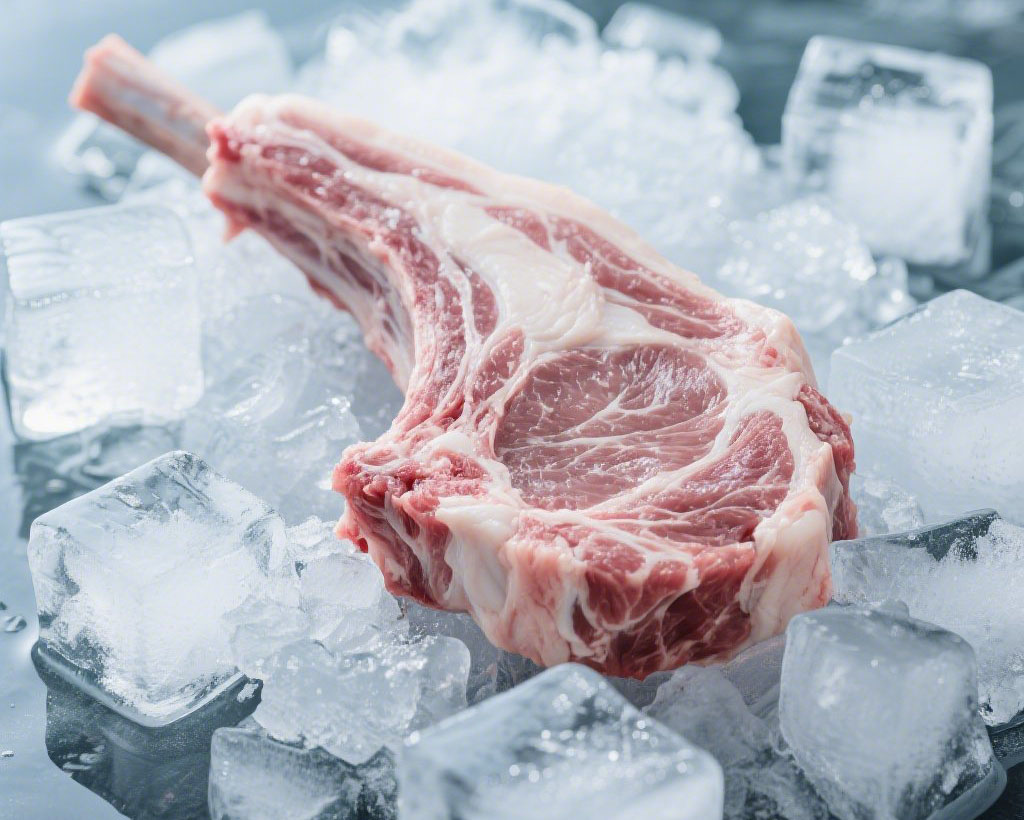Lamb, as one of the traditional meats, is widely consumed in Asia, Africa and the Middle East. Its meat is more delicate than beef and pork, and has a unique mutton smell. In addition to controlling temperature and humidity, the cold chain storage of lamb also needs to consider its special "mutton smell" control, fiber structure protection, and quality maintenance during transportation.
In the process of refrigerating lamb, temperature and humidity control is not only to extend the storage time, but also to ensure that its flavor, tenderness and color will not be destroyed during the circulation process, ensuring that consumers can enjoy the best taste of lamb.
1. Characteristics of mutton: delicate texture and unique mutton flavor
Lamb is characterized by shorter meat fibers, looser tissue, higher water content, and distributed fat, rather than concentrated in one part like beef. This makes lamb more susceptible to water loss and hardening in low-temperature environments than other meats. If the humidity in the storage environment is too low, the water in the lamb will evaporate quickly, causing the surface to shrink, the flavor to decline, and the taste to deteriorate.
In addition, the mutton smell is also one of its special characteristics. Under inappropriate storage and transportation conditions, the odor of lamb may increase. For this reason, the precise control of temperature and humidity in the lamb cold chain is not only to delay corruption, but also to ensure that the mutton smell is effectively "locked" and prevented from emitting.
2. Temperature and humidity control in the cold chain of mutton: the balance between drying and corrosion prevention
In the process of mutton preservation, the control of temperature and humidity is crucial. Generally, the optimal temperature for mutton refrigeration should be maintained between **-1°C and 0°C**, which can effectively inhibit the growth of microorganisms and avoid frostbite or texture changes caused by too low temperature.
• Humidity control: Mutton has high requirements for humidity. Generally, the humidity in the refrigerated environment should be maintained at 85%~90%. Such humidity can effectively prevent excessive water loss of mutton and keep its fresh texture during refrigeration. At the same time, excessive humidity will cause condensation on the surface of mutton, which will promote the growth of bacteria and eventually lead to rot. In order to avoid this situation, modern mutton cold chain warehouses are often equipped with dehumidification systems and air duct control to ensure that the humidity is always within the optimal range and reduce the direct impact of air flow on mutton.

3. Mutton maturation and quality maintenance: precise control of time, temperature and humidity
Similar to beef, mutton also has a certain aging process, especially high-end mutton products (such as lamb chops, lamb legs, etc.), whose meat needs to be aged under appropriate temperature and humidity conditions after slaughter to improve the tenderness and flavor of the meat. In this process, the cold chain system needs to provide a stable temperature and humidity environment for mutton to promote enzyme activity in muscle tissue, help decompose protein and fat, and thus enhance the flavor.
Dry-aged mutton requires lower humidity (about 80%-85%) and relatively high wind speed to prevent excessive moisture from forming on the surface of the mutton, but not to make it over-dry. For wet aging, a slightly higher humidity (above 90%) is required to avoid the surface of the mutton from being dry and hard and to ensure the moist feeling of the meat.
4. Transportation and distribution of mutton: application of cold chain system and packaging technology
The circulation process of mutton also has high requirements for the cold chain. During the transportation process, since mutton often needs to travel a long distance (for example, from the place of production to the urban retail market or international export), the efficiency of cold chain logistics is crucial.
Mutton isusually packaged in vacuum or modified atmosphere packaging technology to reduce the contact between oxygen in the air and microorganisms, and reduce the risk of bacterial growth on the surface of mutton. In particular, controlled atmosphere packaging (CAP) can effectively regulate the concentration of oxygen and carbon dioxide in the package, delay the maturation and oxidation reaction of mutton, and keep its meat fresh and tender.
In addition, modern cold chain transportation systems can ensure that mutton can maintain suitable refrigeration conditions at every link in the entire transportation chain through real-time monitoring and intelligent temperature and humidity control. Especially for perishable products such as mutton, temperature fluctuations and uncontrolled humidity during the circulation process may cause quality degradation, thereby affecting its sales.


 Return to List
Return to List
 Phone
Phone